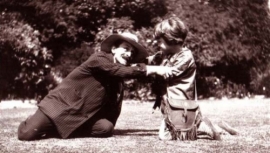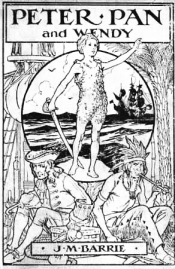 Frances Hodgson Burnett’s The Secret Garden is a children’s classic that has charmed both children and adults alike since the date of its publishing in 1909. Throughout the work, Burnett illustrates the link between location and health or well being. Mary Lennox, the novel’s protagonist, travels from the far away land of India where her parents perished due to a cholera outbreak. In the novel’s beginnings, taking place in India, it is noted that Mary is quite an ugly child with her skin having an almost yellow tint and thin hair. It is also noted that she possesses a poor demeanor. She is waited on hand and foot while in India due to distinct class differences between herself and her servants, therefore, she never quite received any discipline. With her parents’ constant absence from her life, in addition to their deaths, she experiences an atmosphere of trauma, neglect, and bitterness in India. Throughout the work, India is associated with a negative state of being
Frances Hodgson Burnett’s The Secret Garden is a children’s classic that has charmed both children and adults alike since the date of its publishing in 1909. Throughout the work, Burnett illustrates the link between location and health or well being. Mary Lennox, the novel’s protagonist, travels from the far away land of India where her parents perished due to a cholera outbreak. In the novel’s beginnings, taking place in India, it is noted that Mary is quite an ugly child with her skin having an almost yellow tint and thin hair. It is also noted that she possesses a poor demeanor. She is waited on hand and foot while in India due to distinct class differences between herself and her servants, therefore, she never quite received any discipline. With her parents’ constant absence from her life, in addition to their deaths, she experiences an atmosphere of trauma, neglect, and bitterness in India. Throughout the work, India is associated with a negative state of being
During her stay in England, her servant Martha and grounds keeper Ben treat Mary kindly. Through these figures, Mary is disciplined and discovers the transforming abilities of Mother Nature. In her isolation, for she was unaware of any other children at the manor, she learns about plants and gardens, and much like the plants she grows in her secret garden, she grows into a more pleasant individual with a kind heart. She realizes the healing nature of her outdoor activities, and soon encourages her sickly cousin Colin, who is bedridden and bitter, to venture outside just to see the plants growing and the birds singing. In their encounters with Dickon, Martha’s younger brother who is gifted with a closeness to nature, Colin and Mary learn how to be children free from bitterness and full of wonder. Throughout the work, England, especially its moors, are associated with a hearty well being. Though Colin has been living in England all his life, he is deprived of the outdoors and therefore, deprived of a normal and healthy childhood. Through Mary, he is healed and soon stands on his own two feet after being sentenced to a wheelchair for many years.
The Secret Garden is a story of healing, with both the protagonist Mary and her cousin Colin experiencing a great change due to an exposure to fresh air and nature. Throughout the work, location is key to the characters’ health, with India and the indoors being associated with sickness and England as encouraging to one’s health and well being. This dichotomy is clearly seen in Mary Lennox’s 180 degree transformation from yellow, thin, and sour to pink, fat, and jolly.
















